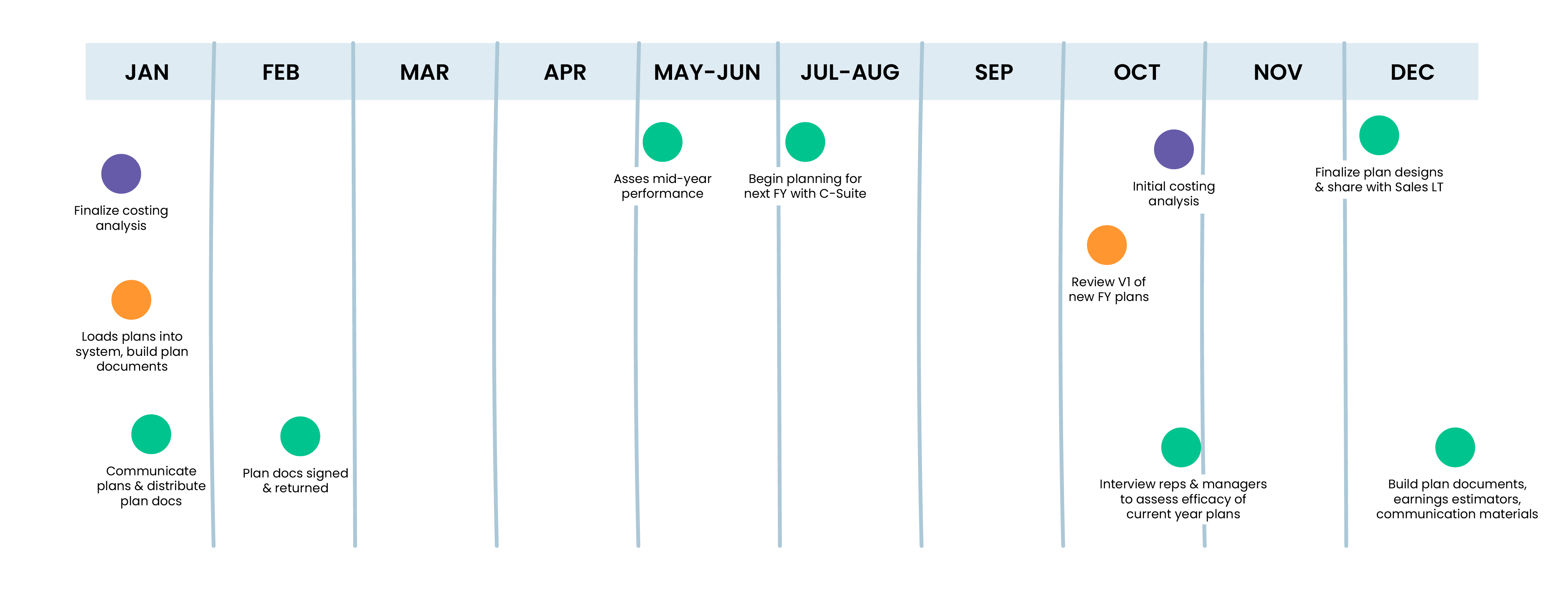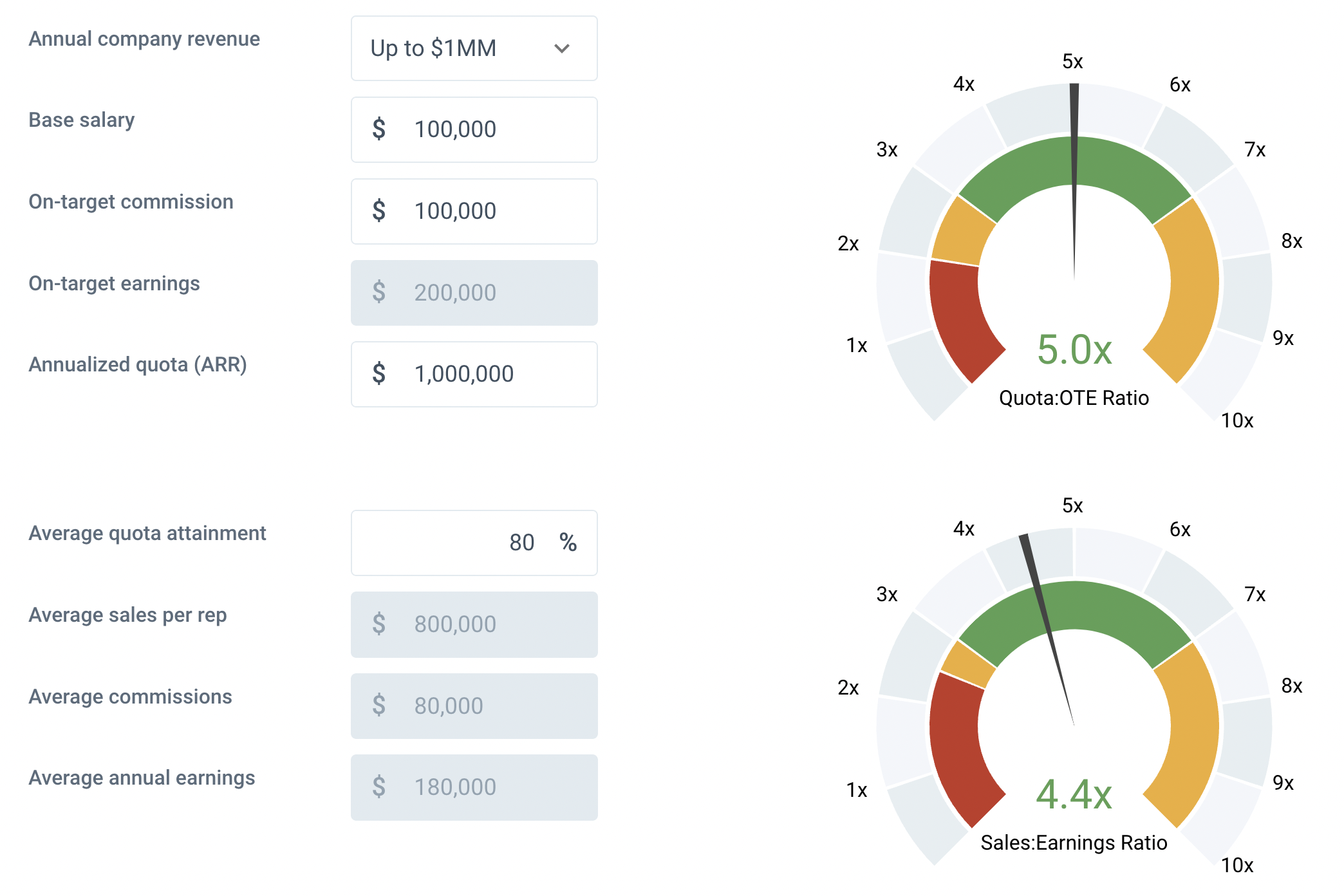In this article, I’ll outline the principles of compensation design, how to build sales compensation plans, and include resources to set OTEs and quotas that keep your reps happy and hungry for more.
Related: Stop Being Poor: 3 Questions You MUST Ask About Your Comp Plan
Why Sales Comp Planning is Key to Rep Retention
The “Great Resignation” has charged on in 2022, leaving sales teams especially vulnerable to higher attrition rates – and sales leaders scrambling to hire top talent. A well-designed compensation plan that attracts and retains reps of all levels and drives performance is more important than ever before.
Dooly, a customer information sales enablement platform, found that 51 percent of sales professionals said they’d quit if they found an opportunity with higher pay.
To further complicate things, on-target earnings (OTE) have reached an all-time high. And, quotas have gotten increasingly harder to hit. Bravado’s 2022 State of Sales Compensation Guide showed that 54 percent of reps missed their quota.
That’s a stark difference from our guidance that 80 percent of your team should hit quota.
All of these changes have forced revenue leaders to reshape their variable pay strategies, and it begins with the compensation structure itself.
When organizations design compensation models that motivate reps and include achievable targets that align with business strategies, the desired sales performance follows. Reward performance fairly, and your reps feel valued and stay longer.

Who should be responsible for sales compensation planning?
We surveyed leaders from more than 150 SaaS organizations and found that sales leaders led comp plan design 73 percent of the time when the company brought in less than $30 million in annual recurring revenue (ARR).
However, comp planning responsibility jumped to RevOps’ or finance’s plate when a company generated more than $30 million in ARR.
Additionally, sales reps’ trust in the compensation model shifted based on which department led the design. For instance, according to our benchmark report, RevOps-developed plans had the most trust. Meanwhile, finance-owned plans yielded the least confidence or trust in the plans.
Because of these two factors, I believe that compensation plan design should be a team effort, but it should be spearheaded by the RevOps organization. And if your company doesn’t have a RevOps team, it might be time to invest in one!
Related: How to Build Effective Sales Compensation Plans for Any Customer Facing Role
What’s the ideal timeline for building and communicating comp plans?
If a compensation plan is designed to drive the behaviors you want from your reps, they need to know as early as possible what you want from them. Because of that, compensation plans should be ready to go by the start of the new year and rolled out to reps in a timely manner. Now, “timely manner” can mean different things to each organization, but try to distribute plans within the first month of your fiscal year.
As for how you roll out these plans, I recommend a dedicated session with the sales team. This should be led by the sales leader and focus on any changes and the “whys” behind each adjustment. If their quotas are going up, you need to tell them what the company is doing to further support the increased demands. Comp workshops between reps and sales management also create a safe space to ask and address any rep-level questions.
To ensure a comp plan is ready by this time, we created this compensation planning calendar below.

Key dates include:
- May – June: accessing the team’s mid-year performance
- July – August: hosting discussions to propose new changes
- Beginning of December: having your plan finalized
Of course, if you’re on an offset fiscal calendar (looking at you, Salesforce…), you can shift each of these dates accordingly.
If you can stick to this timeline and communicate the comp plans clearly to your teams, you should be in good shape to introduce a new plan at your annual sales kickoff.
Compensation design principles
As far as design goes, every sales compensation plan should adhere to the four following design principles.
1. Simple is better
“Commission plans should be so simple that someone could explain it to you in about 15 seconds,” said Bruno.
When reps can easily understand their plan, they’re more likely to maximize their earnings. This is a win-win for your business and your rep. Simplicity also makes it easier to align all stakeholders involved with compensation data as all parties can actually make sense of it.
2. Align comp plan to strategy
“Sales compensation is the caboose — not the engine,” said Pablo Dominguez, venture capital Insight Partners’ Operating Partner of Sales and Customer Success.
Before sorting out the details of your comp plan, have your business strategy and goals fully drawn out. Your comp plan can then act as a guide to reaching those company targets.
3. Limit your plan to three measures at most
Each new measure you add to a compensation plan adds another degree of difficulty. I suggest avoiding more than three measures per plan. (Measures include multi-year contracts, implementation fees, different products, demo appointments set, quarterly quotas, number of sales accepted opportunities, services, etc.)
Additionally, each measure should contribute at least 20 percent of the total variable pay so that reps focus on it. If there’s a sales incentive that only accounts for 5 percent of your reps’ variable pay, it is likely to become a “nice to have” bonus rather than something they are motivated to achieve.
4. Embrace accelerators
Accelerators, also referred to as “multiple rate commission plans,” “escalators, “tiered commission,” and “multipliers,” reward overperformance on your sales organization. By leveraging accelerators, you encourage superior performance, build rep retention amongst your elite performers, and inspire others to meet or exceed target.
A note from our in-house experts, accelerators should be meaningful. Going from 10 percent commission to 11 percent isn’t likely to encourage someone to overperform.
Additionally, don’t write off decelerators as a way to balance out accelerators. If someone doesn’t meet quota, they might earn a lower commission rate. Decelerators help pay for the accelerators. Just be cautious of cliffs — also sometimes called thresholds or gates, instances where reps make 0 percent commission until they hit some milestone — as these can be very demotivating.
Comp plan mechanics that drive performance
Speaking of accelerators, leaders leverage these more than any other compensation component.
In a survey we conducted, we found that more than 80 percent of companies feature accelerators in their compensation plans. Their popularity makes sense, too. Per the Harvard Business Review, having multiple accelerators in place can increase sales by 17 percent.
However, comp plans should be modified for new hires so they still have a shot at reaching their OTE during ramp. You have to keep in mind new reps’ happiness, especially given the current hiring environment. If you don’t give them a way to hit their full OTE as a rep, they’re going to grow unhappy very quickly.
Ramp-ups should also reflect your sales cycle. If your average sales cycle is 90 days, your new-hire ramp should also be at least 90 days to allow time for your new reps to close deals.
You can also offer new hires opportunities to hit quota through commissionable milestones, such as booking a predetermined amount of meetings, creating some amount of newly qualified pipeline, or completing training workshops.
Paying higher commissions on multi-year deals is another great way to grow your average deal size and reward reps handsomely for doing so. In our report, we found that one-third of companies offer higher payouts for multi-year contracts.
Setting OTEs and quota multipliers
Coming up with an OTE and quota that reflect industry trends, reward reps, and are realistic presents a tricky balance. QuotaPath built this free tool, the Quota:OTE Ratio Calculator to help.

The dial on the left, which takes into account base salary, OTE, on-target commissions and annual quota, is hypothetical. The right side then shows what’s happening with your business by factoring in the average percentage of your team that reaches annual quotas.
Using these dials, leaders can determine the multiplier, or how many more times the quota should be than the estimated OTE. Then they can compare that against their company’s actual revenue to determine if the rep’s output is worth the company’s investment.
Most of the companies we speak with try to get their multipliers to 5x their OTEs, which is considered the SaaS standard. But your multiplier is revenue-dependent.
For example, a smaller company that has a lower company revenue ($1 million) should set smaller multipliers (3x). A ratio like this suggests fair compensation for the rep’s efforts and shows that the rep is paying for the company’s investment in them.
Conversely, since companies with larger ARR invest more into sales support through marketing and sales enablement, quota multipliers are much higher (up to 8x) to account for the additional investment.
Quota frequency and fairness
Similar to new-hire ramp periods, your quota frequency should align to your sales cycle and average contract value.
For companies with quick sales cycles, or those less than 30 days, and a smaller contract value, a monthly quota is most appropriate. Whereas if your reps are working six-figure, 180-day sales they should be on an annual quota.
In our benchmark report, we found that about half of the participating SaaS companies used quarterly quotas. Meanwhile, around a quarter of companies operated on monthly quotas and a quarter had annual quotas.
If your team set a goal to increase average contract value, consider adjusting your quota frequency to match the extended sales cycle that will likely follow.
Judging the fairness of your quota
When evaluating the fairness of your quota, or the likelihood that your reps will actually achieve it, look for the following that could indicate an unfair quota:
- Low percentage of team attainment (<70 percent of reps hitting quota)
- A large difference between the median and average performance (this likely indicates a few top performers dragging your average up)
- High sales rep turnover (should be an obvious one, but can get lost as a reason)
- Noticeable performance outliers on the low side and high side (high performers are just as risky as low ones)
Conclusion
Sales reps leave roles rapidly for a number of reasons, but compensation is usually at least a contributing factor.
Your approach to sales compensation plans can both attract or scare off new recruits to your organization.
To ensure your organization is meeting the mark:
- offer competitive OTEs
- keep comp plans easily understood
- reward over performance via mechanisms like accelerators
- set quota frequencies that match the sales cycle
- evaluate your comp plan on a regular basis
- communicate any changes to your team
With these recommendations and resources, I hope that you find comp planning less of a headache and more of a driver to recruit, retain, and motivate sales reps.
Feel free to reach out to me on LinkedIn, if you’d like to chat.
About QuotaPath
QuotaPath partners with hundreds of organizations to align RevOps, sales, finance and operations around sales compensation. With QuotaPath, automate your commission process with a scalable solution, motivate your reps with commission forecasting, integrate your CRM, and never get commissions wrong again.



